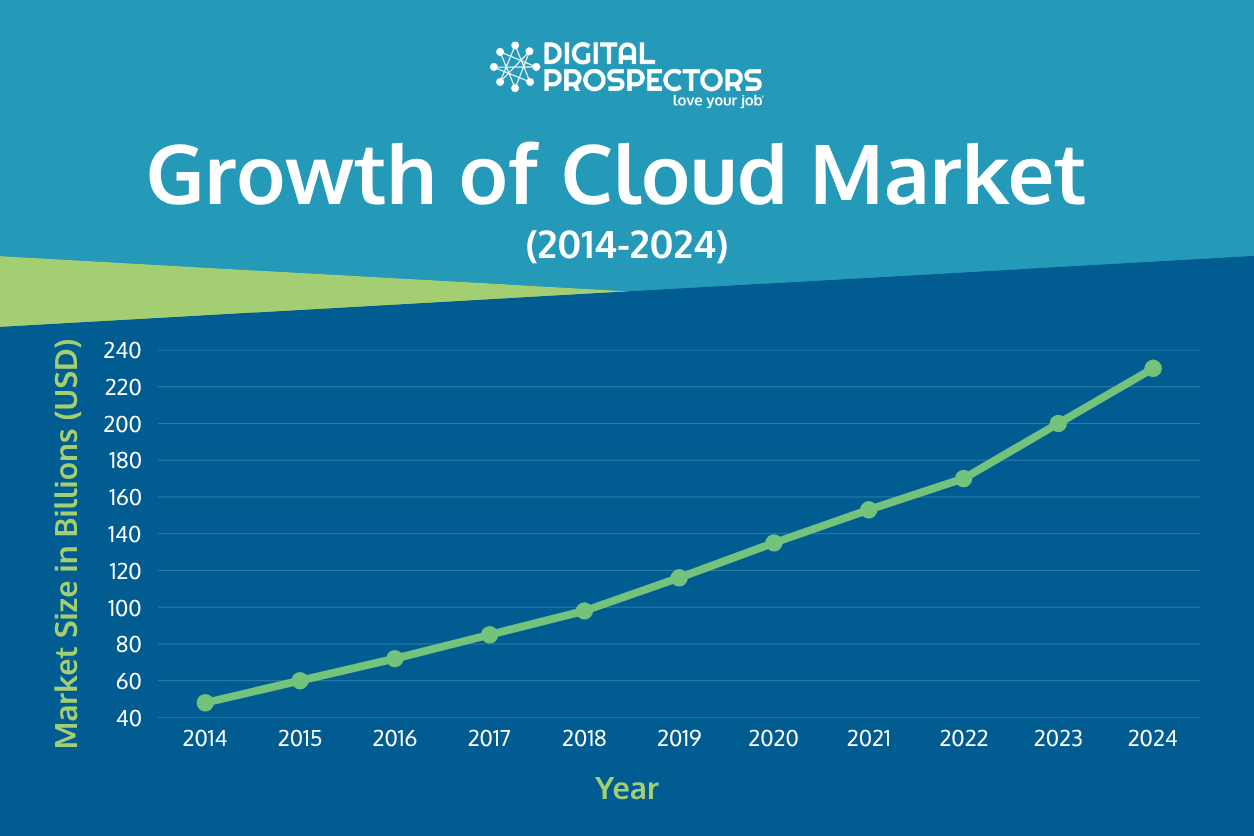The Role of Hybrid and Multi-Cloud Solutions in Enterprise IT
Imagine orchestrating a symphony where every instrument plays in perfect harmony, yet each has its own unique role. That’s the essence of hybrid and multi-cloud strategies in today’s enterprise IT. No longer confined to a single cloud provider, businesses are composing their own cloud symphonies, blending public and private clouds to create a masterpiece of flexibility, efficiency, and innovation. In this blog, we explore how these strategies are not just hitting the right notes but are redefining the entire IT performance.
Understanding Hybrid and Multi-Cloud Architectures
Cloud computing has transformed enterprise IT by enabling greater flexibility, scalability, and cost efficiency. In fact, over 80% of organizations now leverage multiple public or private cloud platforms, making the shift to cloud more than a trend; it’s a competitive imperative. As businesses continue moving away from traditional infrastructure, cloud adoption is reshaping the way organizations operate, innovate, and grow in the digital age.
A Decade of Cloud Market Growth
Over the last decade, the cloud market has seen exponential growth, driven by the need for agile and scalable solutions. Companies are increasingly turning to cloud-first strategies to host applications, store data, and support mission-critical workloads. Rather than simply replacing on-prem infrastructure, this evolution represents a fundamental rethinking of IT architecture to meet the demands of a now data-driven world.
Here’s a graph showing the growth of the cloud market from 2014 to 2024:

What is Multi-Cloud?
A multi-cloud strategy involves using services from two or more public cloud providers, without integrating private cloud resources. This model allows businesses to choose the best cloud for each task, optimize costs, and avoid vendor lock-in. It also increases redundancy and offers flexibility when selecting providers for specific use cases.
However, managing multiple public cloud platforms introduces complexity. Differences in security protocols and pricing models across vendors sometimes require additional oversight and planning. Despite these challenges, multi-cloud solutions remain an attractive choice for organizations seeking performance optimization, provider independence, and tailored cloud solutions.
What is Hybrid Cloud?
Furthermore, hybrid cloud architecture blends public and private cloud environments, enabling organizations to distribute workloads based on performance, security, or regulatory requirements. Typically, this means combining on-premises infrastructure or private clouds with public cloud services, coordinated through orchestration tools that unify management.
The benefits of hybrid cloud solutions include flexible resource allocation, the ability to scale on demand through cloud bursting, and a balanced approach to security and innovation. Nevertheless, it becomes complex to deploy and maintain, particularly when integrating legacy systems or securing data across diverse environments. Still, for enterprises with strict compliance needs or existing on-prem infrastructure, hybrid cloud offers a powerful solution that merges control with agility.
Advantages of Hybrid and Multi-Cloud Services
Effective cloud integration is a cornerstone of modern enterprise IT. Below are key advantages that make hybrid and multi-cloud strategies a smart choice for organizations looking to enhance performance, resilience, and flexibility.
Flexible Architecture & Vendor Independence
One of the most compelling benefits is the ability to avoid vendor lock-in. By adopting hybrid and multi-cloud architectures, organizations choose the cloud providers that best suit each specific workload or application. This flexibility allows businesses to mix services strategically, adapt to changing demands, and negotiate better pricing, all without being tied to a single provider.
Scalability Aligned with Business Needs
These cloud strategies also empower businesses to scale resources dynamically. During periods of high demand, enterprises leverage public cloud capacity to maintain seamless service delivery. Equally, when activity slows down, they reduce costs by shifting workloads to private clouds or scaling back usage. This adaptive model ensures that IT infrastructure remains aligned with evolving operational needs.
Enhanced Performance & Lower Latency
By distributing workloads across multiple cloud environments, companies optimize for speed and efficiency. Selecting cloud providers with geographically dispersed data centers helps reduce latency, improve response times, and elevate the end-user experience. This strategic allocation of resources guarantees high performance, particularly for latency-sensitive or mission-critical applications.
Reliable Disaster Recovery & Business Continuity
Hybrid and multi-cloud systems strengthen disaster recovery capabilities. By replicating and backing up data across different environments, businesses recover quickly from outages or system failures. The ability to shift workloads between clouds or to on-prem infrastructure minimizes downtime and protects valuable data, ensuring business continuity in the face of disruption.
Stronger Compliance & Data Sovereignty
Finally, these architectures support compliance efforts and data governance. Organizations are able to store sensitive data in private cloud environments while still benefiting from the scalability of public cloud services. This approach ensures compliance with regulations such as GDPR or HIPAA, enhances data sovereignty, and builds greater trust with customers and stakeholders.
How AI is Transforming Hybrid and Multi-Cloud Environments
Artificial Intelligence (AI) is reshaping the cloud computing landscape, unlocking powerful tools for automation, optimization, and innovation. When integrated into hybrid and multi-cloud strategies, AI enables businesses to extract deeper insights, improve security, and streamline operations. Some of the most impactful ways AI is enhancing cloud capabilities are:
Smarter Data Management and Real-Time Insights
To begin with, AI-powered cloud platforms dramatically enhance how organizations handle large volumes of data. Furthermore, machine learning models rapidly process and interpret complex datasets, delivering real-time insights that drive smarter, data-backed decisions. This is especially beneficial in data-intensive sectors like healthcare, retail, and finance, where speed and precision are crucial.
Proactive Security and Continuous Compliance
Moreover, AI elevates cloud security by detecting anomalies and responding to threats instantly. Through pattern recognition and predictive analytics, AI systems identify potential breaches before they escalate. At the same time, these tools ensure compliance with evolving regulations by continuously auditing cloud environments, offering peace of mind for businesses in regulated industries.
Automated Operations and Boosted Productivity
Another key advantage is operational automation. AI minimizes manual tasks by autonomously managing processes such as resource provisioning, system maintenance, and performance tuning. As a result, IT teams are able to focus on innovation and strategic initiatives, reducing costs while enhancing system reliability and overall productivity.
The Importance of Upskilling and Reskilling in the Age of AI and Cloud
As AI continues to transform cloud technologies, organizations also need to evolve their workforce. Upskilling and reskilling employees is not just a best practice, it’s a strategic necessity. Here’s why:
Staying Ahead of the Technology Curve
First and foremost, technology is evolving at breakneck speed. Without continuous learning, employees risk falling behind. By investing in training programs, businesses ensure their teams remain proficient in the latest cloud platforms, AI tools, and automation frameworks, keeping the organization competitive in a fast-changing digital market.
Fostering Engagement and Long-Term Retention
Additionally, learning opportunities increase employee engagement and loyalty. When professionals feel supported in their growth, they’re more likely to stay motivated, innovative, and committed to the company’s success. This not only strengthens team morale but also reduces turnover and boosts the retention of top talent.
Fueling Innovation and Agility
Finally, a well-trained workforce is key to staying agile. Employees equipped with cutting-edge skills adapt more quickly to new challenges, deploy novel solutions, and push innovation forward. In an AI-driven cloud ecosystem, this kind of adaptability is what allows businesses to capitalize on emerging opportunities.
Bridging Complexity with Capability
As enterprises grow increasingly reliant on cloud infrastructure, the combination of hybrid and multi-cloud strategies, enhanced by AI, offers a dynamic framework for agility, performance, and innovation. From optimizing workloads and reducing latency to fortifying security and ensuring compliance, these architectures are business enablers. But realizing their full potential isn’t just about adopting the right technologies, it’s about assembling the right team.
Digital Prospectors understands the human side of digital transformation. We specialize in connecting forward-thinking organizations with the expert talent needed to architect, manage, and evolve next-gen cloud environments. Ready to turn complexity into competitive advantage? Let’s find your next great hire together.
About Digital Prospectors
Founded in 1999, Digital Prospectors started with the belief that meaningful careers transform lives. With hard work, integrity, and accountability, we connect top talent with the right opportunities—because everyone deserves to love their job. We embrace diversity and inclusion, fostering a workplace where all feel safe, valued, and supported. Specializing in Life Sciences, Engineering and Information Technology, we don’t just fill roles—we build careers, strengthen teams, and drive innovation. Let’s create something special together.


